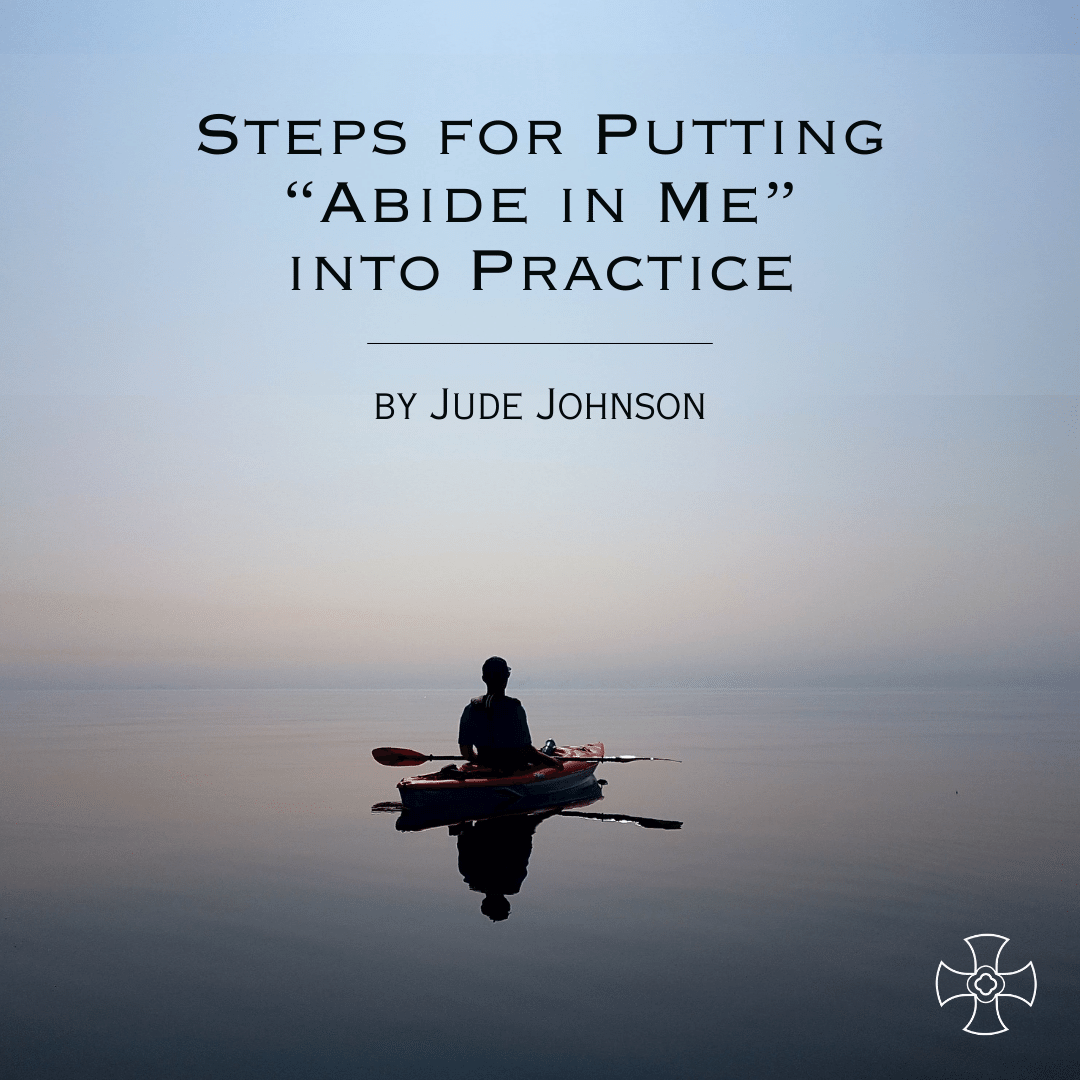By Jude Johnson
Every time I read John 15:1-8, the theme for this year’s RezArts Festival, one word echoes like a refrain to me: abide. In this short passage—the final “I am” declaration of Christ in John’s Gospel¹—Jesus describes himself as a vine, with his disciples as branches. In my go-to translation of the Bible, the ESV translates the Greek word μένω (menō) as abide.² What in the world does that word mean? As an English literature student (who, I might add, is not versed in Greek!), I immediately look to other English translations to see if any other text might make things more clear:
“Remain in me, as I also remain in you.” (NIV)
“You must stay joined to me in the same way a branch is joined to the vine.” (FNVNT)
“Live in me. Make your home in me just as I do in you.” (The Message)
In that final translation from Eugene Peterson’s The Message, the idea of “living” in Christ makes a bit more sense, I suppose, as does “remaining” or “joining.” Yet none of these present a practical explanation for how I can abide in Christ. I constantly find myself struggling with: Am I abiding?
New Testament scholar Gary M. Burge, commenting on John 15, writes that “discipleship is not just a matter of acknowledging who Jesus is; it is having Jesus spiritually connected to our inner lives.”³ I’m inclined to trust this definition, but the question still remains as to how we can put Christ’s command to “abide in me” into practice. Here are a few good starting points:
- Study a passage of Scripture: Take an hour to read and research a particular portion of the Bible (e.g. John 15!). Watch videos, read commentaries, listen to podcasts, or discuss with friends. Afterward, take some time to pray about what you discovered. Ask: Lord, how can these resources deepen my love for you?
- Experiment with the prayer of examen: Developed by St. Ignatius of Loyola in his Spiritual Exercises, the prayer of examen is a contemplative prayer method designed to help you develop a deeper sense of the inward “highs” and “lows” of your spiritual life. To experiment with the prayer of examen, check out this guide. (Or, if you are interested in learning more about Ignatian prayer, explore participating in our Transformation Intensive this spring with Deacon Val.)
- Try engaging with lectio divina: The practice of lectio divina—literally “divine reading” in Latin—is oriented around reading a particular passage of Scripture repeatedly in a prayerful manner. To try this practice, use this guide as a starting point.
- Create a work of art: Pull out your pencil! Try reading through a passage of Scripture, then prayerfully create a piece of art in which you reflect on what
 you feel like God is teaching you. You could write a poem, compose a song, choreograph a dance, or paint a picture. (This is also an excellent way to create something for the RezArts Festival- deadline Sunday, Jan 14!)
you feel like God is teaching you. You could write a poem, compose a song, choreograph a dance, or paint a picture. (This is also an excellent way to create something for the RezArts Festival- deadline Sunday, Jan 14!) - Simply slow down: We live a fast-paced, breathlessly busy lifestyle, which often inhibits our ability to be present to God in our daily life. One excellent reflection of how to cultivate a slower life in service of Christ is John Mark Comer’s book The Ruthless Elimination of Hurry.
This is by no means a comprehensive list of spiritual disciplines, nor should you come away thinking of “abiding” in Christ as something you must do—as if it was some item to check off one’s to-do list! Ultimately, one thing seems clear to me: Jesus desires a deep relationship with us, and relationships are developed through shared—and often, unstructured—time. If we are to have a healthy relationship with Jesus, then we must give him our time.
 Jude Johnson, an Aequitas Urban Leadership Fellow at Wheaton College, studies art history and English literature. He has served with RezYouth and works to foster artistic community at Church of the Resurrection.
Jude Johnson, an Aequitas Urban Leadership Fellow at Wheaton College, studies art history and English literature. He has served with RezYouth and works to foster artistic community at Church of the Resurrection.
¹Gary M. Burge, John: The NIV Application Commentary (Grand Rapids: Zondervan Academic, 2000), 417.
²To identify this Greek word, I used the online tool STEP Bible.
³Burge, 418.
Top photo by Jonathan Borba



